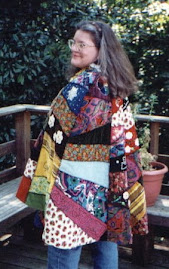I begin by stenciling lattice just below the ceiling. I'm using an ergonomic stencil brush, which is easier to hold for long periods of time. This part of the project will take about three hours.
The stencil I'm using is a a one-part stencil. Some stencils are applied in layers, with separate stencils. This one is much simpler to use.
You'll want to start in the part of the room which is least noticeable as you enter the room. I usually start at the corner nearest the entry door. Your room may have a better starting point. Remember that the beginning and end of your stenciling pay not perfectly align when you reach the end. So, you want that point to be the least obvious place you can find.
I have a roll of special stencil tape. You could probably also use any low tack (blue) painters tape. The small bottle contains alcohol, which will dissolve paint in the case of a horrible mistake. (I did not need to use it! Be careful with it, because it can also remove your base paint.) The Q-Tips are for correcting small mistakes, such as smudging along the edges. The rag is for cleaning up larger smudges. I like microfiber cloths for this. My tools are contained in a very old paint tray, which fits onto the top of my ladder. None of my newer trays fit!
Stenciling is easy! All you have to do is apply the paint through the holes. If you have a new pot of stencil paint, you will need to use a paper towel to remove the film from the top of the paint. I like to use the cream type stencil paint. You could also use acrylic craft paint, but it is messier and is more likely to seep beneath the stencil.
Dab the tip of your brush into the stencil paint. You don't want to use very much. Using a swirling motion, apply the paint through the holes of the stencil. When I stencil, my goal is to apply the paint in a uniformly non-uniform manner. I want some areas a bit darker, some with the base coat showing through. But, I want this non-pattern to be fairly consistent throughout the project. This faux-shading will lend depth to your project.
This is the beginning of the stencil work.
When you come to a corner, form the stencil to the corner. This part is a bit fiddly. You may have to use your fingers to push the stencil against the corner as you apply the paint.
This is where my beginning and ending points met. You'll notice they don't match up perfectly. If I weren't doing more to this frieze, I'd want to make them blend better. But I'll be adding several more elements, which will conceal this area.
I'll let this dry a few days.
Next up...painting flowers...stay tuned...








No comments:
Post a Comment